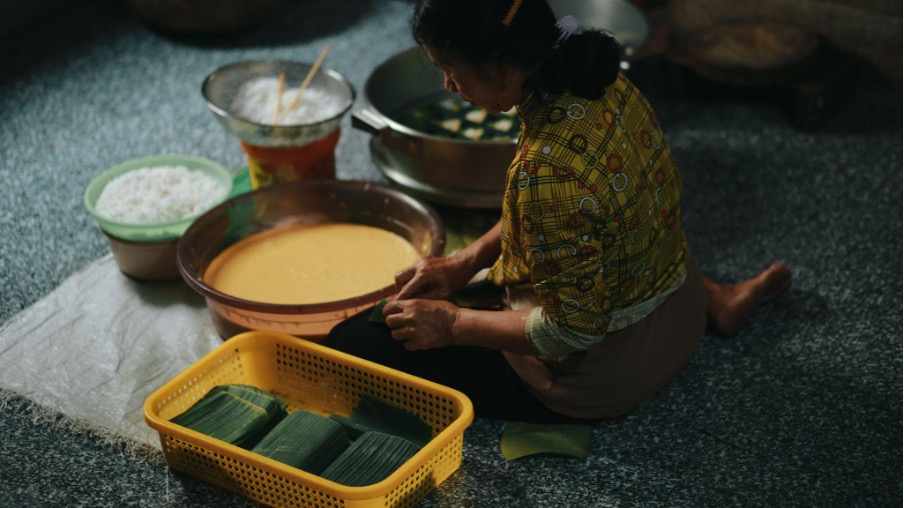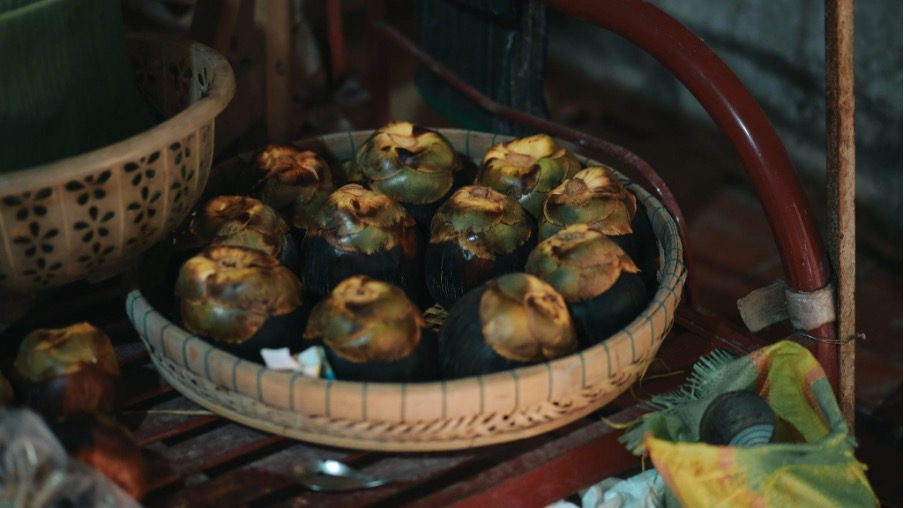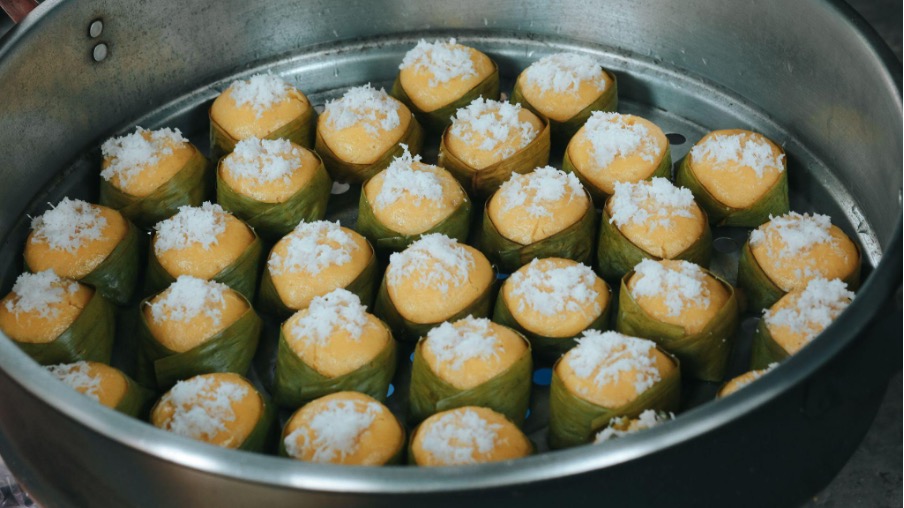Life in the border area
The image of the vast fields of pine nuts in Tri Ton and Tinh Bien has penetrated the memories of many generations of people in the Bay Nui region in many different ways. From building a house with palm trees to processing specialties famous for their water and palm fruits. For many years, the rows of pine nuts have stood firmly in the sky, supporting many families to make a living in the border area.
In An Giang, there is a profession often called "eating rice underground to do business in the sky", people call it that to show people who make a living by climbing to harvest water and fruit on trees tens of meters high.
Fresh fruits and palm water can be used as a refreshing, sweet and refreshing soft drink. It is this pure "heavenly fruit" that can also make famous palm sugar in all regions with a very unique sweetness.
Not stopping there, the people of the Bay Nui region also created a unique cake: Beefsteak cake. Although it is just a rustic dish, it carries a long-standing cultural story associated with the Khmer and Vietnamese people living in the border area.



Secret from local ingredients
The recipe for making bo thot non is not elaborate, but to get a delicious finished product requires meticulousness and patience. Local people will choose delicious rice to ground into powder. The rice must be fresh, the solid grains must be stored when mixed to be flexible, helping the cake to bloom after steaming without breaking.
The indispensable highlight is the ripe jaggery and jaggery. The rice of ripe jaggery is the ingredient that determines the color - flavor - taste of this special beef cake. After peeling, remove the seeds, take the pureed golden rice and mix directly into the rice flour with palm sugar and coconut water. This method creates a natural orange-yellow color, characteristic aroma and moisture to help the bamboo root foam cake intestines stay flexible.
Unlike the sweetness of sand sugar, palm sugar brings a refreshing flavor, accompanied by a very unique natural aroma. Thanks to that, when cooked, the cake not only has an eye-catching color but also exudes a unique aroma, difficult to confuse with any other type of cake.
In addition, coconut milk and a little wine are also added. Coconut water creates fatty texture, while rice and wine help ferment the flour, making the cake have a foam structure, inside which many small holes appear like bamboo root. Beefsteak is often made in a tray and stewed overnight to naturally ferment the flour. This is the step that determines quality. If the flour is not "ripe", the cake will be thick and not bloom; on the contrary, if it stays too long, the cake will easily become sour.
When put into the steamer, the worker often sprays an additional layer of coconut milk on the surface. This coconut water layer not only creates a beautiful shine but also adds richness. After about 20 minutes, the cake is cooked, taken out and sprinkled with grated coconut. The finished products are round or square cakes, a few feces thick, bright yellow, giving off a fragrant aroma mixed with the smell of coconut and palm sugar.
The special thing about Chau Doc is that many families still have the habit of wrapping the cake with soong banana leaves or soong leaves - a type of leaf that is rarely available. This way of wrapping helps the cake retain steam, not harden, while preserving the gentle aroma of the leaves.
Chau Doc beef stew cake has its own appeal, making it a popular choice for tourists to buy and bring back after every trip. When biting the cake, people easily feel the softness, stickyness, and sweetness spreading. There is a little light sourness of wine enzyme, the fatty taste of coconut, the thanh of palm oil - all blend together in harmony.
For many children of An Giang far from home, this small cake still reminds them of their childhood memories. In rural markets, during traditional festivals, or on death anniversaries, the gourd cake often appears on the offering tray, as an indispensable part of spiritual life.
Chau Doc beef stew cake is not only a delicious specialty, but also a vivid testament to cultural exchange and human creativity under natural conditions. In each bowl of golden cakes, people find the sweet flavor of the land of An Giang, along with the story of the diligence and ingenuity of the people in the border area.











